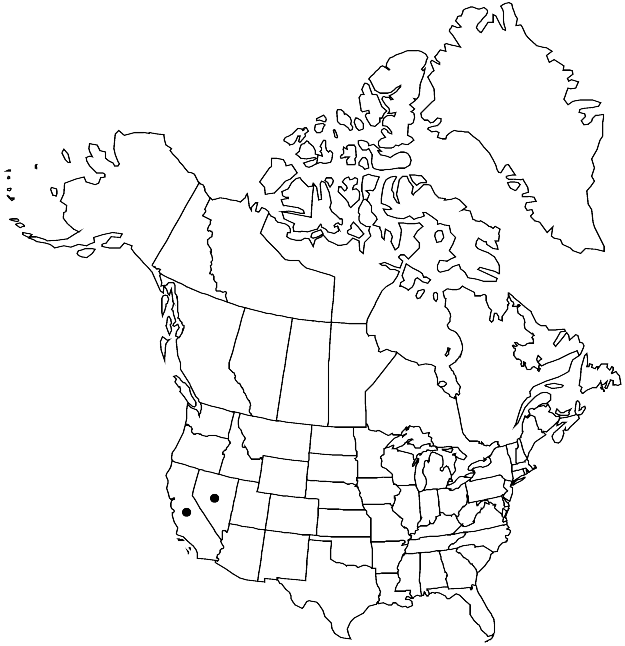Streptanthus oliganthus
Contr. Dudley Herb. 3: 372. 1946.
Perennials; (caudex simple or few-branched); (glaucous), usually glabrous, (petioles of basal leaves pubescent). Stems usually unbranched, rarely branched, 1.5–4 (–5) dm. Basal leaves rosulate; petiolate (petioles usually not or rarely narrowly winged, setose-ciliate); blade narrowly oblanceolate to lanceolate, 4–10 cm, margins entire. Cauline leaves: blade oblong-lanceolate, 2.5–8 cm × 5–16 (–25) mm, (smaller distally), base auriculate, margins entire, (apex obtuse to acute). Racemes ebracteate, (lax). Fruiting pedicels divaricate-ascending, (straight), 3–10 mm. Flowers: calyx campanulate; sepals purple, (broadly oblong), 5–8 mm, not keeled; petals maroon-purple (claw purplish), 9–12 mm, blade 2–4 × 0.7–1 mm, margins not crisped, claw 6–8 mm, wider than blade; stamens in 3 unequal pairs; filaments (distinct): abaxial pair 5–7 mm, lateral pair 3–5 mm, adaxial pair 7–9 mm; anthers (all) fertile, 2.5–4 mm; gynophore 0.5–1 mm. Fruits ascending to divaricate-ascending, smooth, straight, flattened, 4.5–9.7 (–10.5) cm × 2–2.7 (–3) mm; valves each with prominent midvein; replum straight; ovules (42–) 48–60 per ovary; style 0.1–1 mm; stigma entire. Seeds oblong, 2–2.5 (–2.7) × 1.5–2 mm; wing 0.2–0.4 mm wide, continuous.
Phenology: Flowering Jun–Aug.
Habitat: Dry open pinyon woodland, pine forest, rocky subalpine forests, sagebrush
Elevation: 2000-3100 m
Discussion
Streptanthus oliganthus is known in California from Mono County and in Nevada from Esmeralda, Lyon, and Mineral counties. N. H. Holmgren (2005b) reported it as disjunct in Nye County (Nevada).
Streptanthus oliganthus is related to S. cordatus, from which it is readily distinguished by having basal leaves with margins entire versus dentate, petioles usually not winged, rarely narrowly so, versus broadly winged, stigmas entire versus slightly to strongly 2-lobed, ovules (41–)48–60 versus 20–38(–44) per ovary, fruits 2–2.7(–3) versus (2.5–)3–6(–7) mm wide, and seeds narrower (2–2.5(–2.7) × 1.5–2 versus 2.5–5 × 2.2–5 mm).
Selected References
None.
Lower Taxa
"elongated" is not a number."thick" is not a number."dm" is not declared as a valid unit of measurement for this property."dm" is not declared as a valid unit of measurement for this property.
